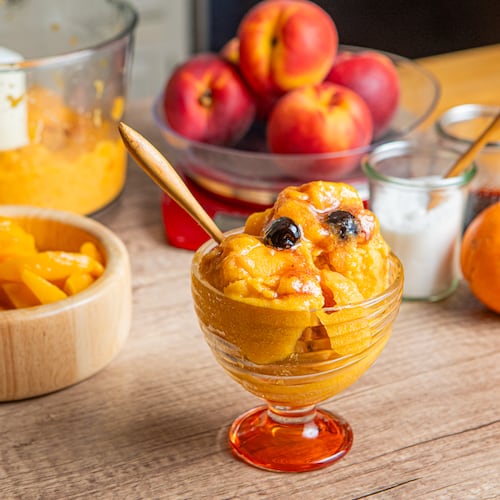Plenty of friends volunteer to “help” when I’m testing recipes. When macaroni and cheese is on the menu, everyone shows up. They bring opinions on everything from the sharpness of the cheese to the pasta shape. Crumb toppings? Crisped in the oven? Some say yes, others want their comfort food straight from the saucepan.
Most cooks in my circle look beyond the blue box when serving company. They’re willing to shred cheese, create a sauce, seek out imported pasta, pair wine with a revved up version.
We might believe that mac and cheese is quintessentially American. However, Wikipedia (don’t judge, I like my food history light — like my cheese sauce) tells us that casseroles of pasta with cheese date back to the 14th century in Italy. Pasta with bechamel sauce and cheddar cheese can be found in 18th century English cookbooks. Then President Thomas Jefferson reportedly ate it in Paris and served a version at a state dinner.
This country has embraced this perfect combination ever since. Today, macaroni and cheese features in some form on restaurant menus, in cookbooks, on food television and most of our dinner tables.
At home, start with good pasta. For the best texture, I look for imported pastas made from durum wheat. Warm, melty cheese sauce clings best to tubular shapes — with or without ridges. Small, bite-size penne or shells, spring-like fusilli, rotini, farfalle, even wagon wheels stay al dente when sauced. Casarecce and cavatappi prove gorgeous; look for them in Italian specialty shops. I avoid the little ear-shaped orecchiette for mac and cheese because they nest together too readily. Elbow macaroni bores me.
Cook the pasta in plenty of salted water in a large pan, stirring often, until al dente. That means firmer than you might think. So set the timer 2 minutes earlier than the package recommends, then taste a noodle — it should have just a bit of resistance when bitten. Scoop out and set aside about a cup of the cooking liquid in case you need it to loosen your cheese mixture. Then drain the pasta and sauce it while still hot.
For the sauce, I start with olive oil or bacon over butter for flavor variety. Chopped onions and fresh garlic add texture. I am especially fond of replacing milk with mascarpone. Hailing from Italy’s Lombardy region, mascarpone is buttery-rich, soft and beautifully unctuous. Made from cow’s milk, mascarpone is set with citric or tartaric acid instead of rennet, so it’s not technically a cheese. Cream cheese blended with a bit of milk or whipping cream makes a suitable substitute.
For cheese, I opt to shred my own. Pre-shredded cheeses save time, but the cellulose added to prevent caking means the cheese won’t melt as nicely as block cheese. I like freshly shredded Parmesan rather than spongy orange cheese. Use the best imported Parmesan you can afford, but the less expensive grana Padano makes a fine stand-in. I like to add ricotta for a tangy flavor and hearty texture.
America’s favorite comfort food becomes a gourmet, Italian-style first course when made with imported casarecce pasta, shallots and pancetta. Served as a primo, the recipe will yield 8 servings. Family style, you’ll have 6 hearty portions.
My son, who swaps grocery shopping and dishwashing for food, says this might just be the easiest homemade mac and cheese we’ve ever made. Chopping the bacon is the only difficult part. Rich, creamy, toothsome and endlessly customizable, we’ve yet to exhaust ideas — or our tasters.
———
CREAMY BACON MAC AND CHEESE
Prep: 15 minutes
Cook: 20 minutes
Makes: 6 to 8 servings
3 or 4 thick slices smoky bacon or 4 ounces pancetta
1 small onion or 2 large shallots, finely diced
1 or 2 cloves garlic, finely chopped
1 1/2 cups coarsely shredded Parmesan, plus more for serving
1 cup mascarpone, at room temperature
1/2 cup ricotta
1/2 to 1 teaspoon salt
1/4 teaspoon each: freshly ground black pepper, crushed red pepper flakes, optional
1 pound tubular pasta shapes, such as casarecce, small rotini, fusilli, penne or cavatappi
Sprigs of fresh thyme
1. Heat a large pot of well-salted water to a boil over high heat.
2. Meanwhile, cut bacon into 1/2-inch pieces. Put bacon and onion into a 10-inch nonstick skillet. Cook over medium heat until bacon is golden and a little crispy, 3 to 4 minutes. Stir in garlic and remove from heat.
3. Meanwhile, put Parmesan, mascarpone, ricotta, salt, pepper to taste and crushed red pepper in a large bowl. Use a rubber scraper or wooden spoon to thoroughly blend the mixture.
4. Add pasta to the boiling water. Stir well and boil uncovered until al dente (nearly tender), usually 10 to 12 minutes. Set a timer and then start tasting the pasta near the allotted time. Al dente pasta has a toothsome texture (not at all soft and mushy) and tastes fully cooked. Scoop out and reserve about 1 cup of the pasta cooking water.
5. When pasta is done, drain it in a colander and then add it to the cheese mixture. Top with the bacon mixture. Use a large spoon to stir to coat all the pasta with the cheese mixture. Add a little of the reserved pasta water if needed to loosen the mixture.
6. Serve right away garnished with sprigs of thyme. Pass extra Parmesan, if you wish.
Nutrition information per serving (for 8 servings): 565 calories, 34 g fat, 18 g saturated fat, 91 mg cholesterol, 45 g carbohydrates, 1 g sugar, 20 g protein, 485 mg sodium, 3 g fiber
SUBSTITUTIONS
Instead of mascarpone, use 6 ounces cream cheese at room temperature blended with 1/4 cup half-and-half.
For a smokier version, substitute smoked Gouda for the Parmesan.
1/4 cup olive oil or butter (or white truffle oil) can stand in for the bacon.
Whole wheat pasta works, too.
VARIATIONS ON THE THEME
Asparagus mac and cheese: Use 1/4 cup olive oil in place of the bacon and add 1 or 2 cups diced fresh skinny asparagus along with the garlic.
Mushroom mac and cheese: Add 1 1/2 cups thinly sliced mushrooms when cooking the onion.
Spicy sausage mac and cheese: Use 6 ounces crumbled Italian sausage instead of bacon and cook thoroughly. Then stir in1 or 2 roasted and diced banana peppers.
Smoked salmon mac and cheese: Skip the bacon and use 1/4 cup olive oil instead. Stir 1 to 2 cups flaked or diced smoked salmon into the finished dish before serving. Garnish with chopped chives.
Crab or lobster mac and cheese: Skip the bacon and use 1/4 cup olive oil instead. Stir 1 to 2 cups cooked crab meat or lobster meat into the finished dish before serving. Garnish with chopped chives.
Plus: The next two versions were developed in the Tribune test kitchen:
Taco mac and cheese: Skip the bacon and onion. Brown 1 pound ground beef; stir in 1 packet taco seasoning. Sub 2 cups shredded Mexican cheese blend for the Parmesan and ricotta, mixing it with the mascarpone. Into the finished dish, stir the taco meat, 1 cup chopped green onions, and sliced black olives and pickled jalepeno to taste. Top with Fritos.
Buffalo chicken wings mac and cheese: Chop 20 boneless Buffalo chicken wings (or use bone-in and debone them yourself) into 1-inch pieces. Skip the bacon and use 2 tablespoons olive oil to saute the onion, along with 1 cup celery (in 1/2-inch pieces) and 1 to 2 cloves garlic, minced. Sub 8 ounces blue cheese crumbles for the Parmesan and ricotta. Add 2 to 4 tablespoons hot sauce (such as Frank’s) to the cheese mixture before stirring in the chicken, celery and onion.
HEALTHIER MAC AND CHEESE
Prep: 15 minutes
Cook: 20 minutes
Makes: 8 servings
1 small onion, finely diced
2 tablespoons olive oil
2 cloves garlic, finely chopped
4 cups mixed baby kale
1 cup coarsely shredded Parmesan
1 cup nonfat ricotta
1/2 cup 0 percent plain Greek yogurt or light sour cream
1/2 teaspoon salt
1/4 teaspoon each: freshly ground black pepper, crushed red pepper flakes, optional
1 pound whole wheat rotini or penne pasta
1. Heat a large pot of well-salted water to a boil over high heat.
2. Saute onion in olive oil in a large skillet until tender, about 4 minutes. Stir in garlic; cook 1 minute. Remove from heat. Stir in kale to coat with oil.
3. Meanwhile, put Parmesan, ricotta, yogurt, salt, pepper and crushed red pepper in a large bowl. Use a rubber scraper or wooden spoon to thoroughly blend the mixture.
4. Add pasta to the boiling water. Stir well and boil uncovered until al dente (nearly tender), usually 8 to 10 minutes. Set a timer and then start tasting the pasta near the allotted time. Al dente pasta has a toothsome texture (not at all soft and mushy) and tastes fully cooked. Scoop out and reserve about 1 cup of the pasta cooking water.
5. When pasta is done, drain it in a colander and then add it to the cheese mixture. Top with the kale mixture. Use a large spoon to stir and coat all the pasta with the cheese mixture. Add a little of the reserved pasta water if needed to loosen the mixture. Serve right away.
Nutrition information per serving: 306 calories, 7 g fat, 2 g saturated fat, 13 mg cholesterol, 46 g carbohydrates, 3 g sugar, 16 g protein, 362 mg sodium, 5 g fiber
About the Author
The Latest
Featured

